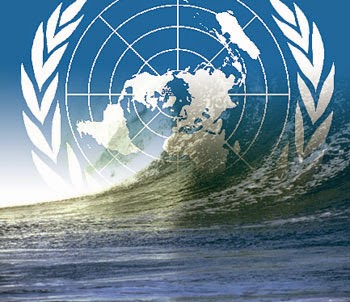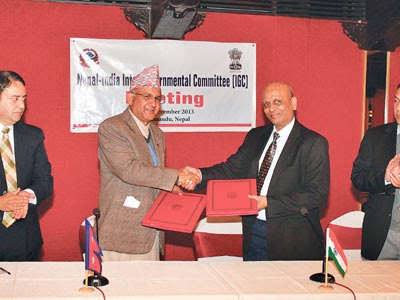The ruling elites of Nepal who are invariably in the majority never
want consensus to hear the voices of weaker sections of the masses.
 |
| Photo: DECCAN Chronicle |
When India PM Narendra Modi said,
‘Nepal should make a constitution on consensus taking confidence of dissident
parties rather than majority voting’ sparked a political debate in Nepal. Mr
Modi’s remarks in the course of his visit to Nepal during 18th SAARC summit in
Nepal has provoked some leaders of Nepali Congress and Communist Party of
Nepal, United Marxist and Leninist (CPNUML) who are pro-rightist. Whereas the
Maoist leaders are more assured of it, and thought to aid in their stance of
consensus for the constitution.
Mr Modi’s suggestion is taken as
intervention by pro-rightist leaders of Nepali Congress and CPNUML. Those
leaders, mostly belonging to the traditional ruling elite of Nepal, are not
convinced to address all the subdued voices of the weaker section of the
ethnically diverse Nepali society. Since they’ve been in majority throughout
the democratic history of Nepal, they’re less likely to accept the
representation and inclusion of all the people left behind. Whereas, Maoist
leaders who are regarded as pro-leftist and close to all the disadvantaged
people of Nepal are in favor of consensus in constitution building. Their
demand is to address the voice of the people belonging to the weaker section of
Nepali society who barely has a majority in the Constituent Assembly.
Leaders of NC and UML have
criticized Mr Modi’s remarks. Gagan Thapa, a young and popular leader of the NC
has said that Modi doesn’t have right to intervene in Nepali politics. In
addition, Mohan Bikram Singh, the leader of a fraction of CPNUML said that
Modi’s remarks over Nepal’s process of constitution making is intervention in
Nepal’s sovereignty. Both of them belong to the ruling elite of Nepal.
Nepal holds the story of
dominance by ruling elite in executive, judicial system and the legislature. Those
ruling elites are Bahun, Chhetri and Newar, or popularly known as people of the
mid-hill. After Janga Bahadur Rana, the powerful and cunning prime minister
promulgated the Civil Code 1910 based on caste hierarchy the people belonging
to lower echelon remained oppressed. His Civil Code is just a continuation of
Jaya Sthiti Malla’s division of Nepali society into four categories—Brahmana,
Chhetria, Vaishya and Sudra—based on the very Hindu philosophy of Vedic saint
Manu. Even after so called restoration of democracy in 1950 the same group got a
chance to exercise power. After two decades of democracy, then the King
Mahendra declared Nepal a Hindu state which further helped mid hill people to
prosper. As a result, they got a chance to gain education, collect property,
acquire most of the political and administrative positions and patronized their
cronies to rule the country. The situation remained same until the second
democracy in 1950.
The majority voting system was
further restored in 1950 after falling partyless Panchayat regime of the
monarch. Yet, the people of lower hierarchy remained away from exercising
democratic values in the country. It was until the third peoples’ revolution in
2006 which introduced inclusive democracy. A coalition government was made
based on consensus. Realizing the fact that the mere majority voting could not
represent all the people, the coalition government held the Constitution
Assembly election following first past the post and proportional representation
voting system. The interim government was formed from the Constituent Assembly,
which also drafted an interim constitution.
The interim constitution is a
short term arrangement for restoring peace and addressing the voice of the
people left behind by the mainstream development. Its mandate is to make a
constitution that can address the suffering of all the weaker section of Nepali
society who have never felt associated with the state. Thus, there was an
agreement of listening to the voice of all the people who normally do not have
representation (or enough representation) in government.
However, those ruling elites of
mid hill are not happy with listening to the voice of all those left behind. Although
consensus was the only mantra to write constitution first, then follow the
norms of constitutionalism i.e. rule of the majority, periodic election,
supremacy of the people, democracy, rule of law and judicial review.
Narendra Modi who is watching the
political advancement of Nepal closely, just uttered few words to reinstate
what Nepal has decided to go ahead with. Some leaders are simply commenting on
him to defend their greater share of several decades of power usage.

























